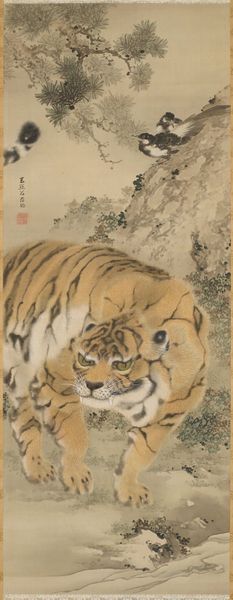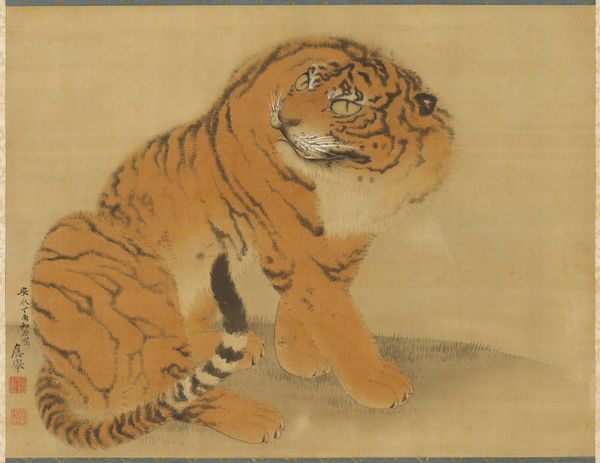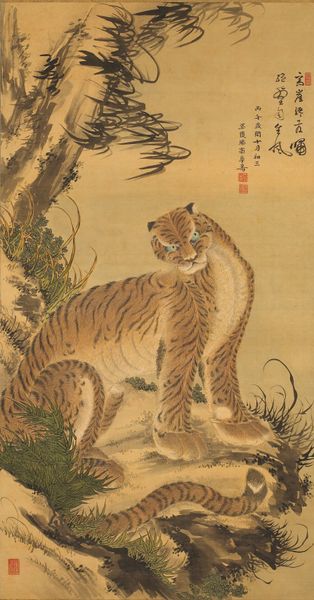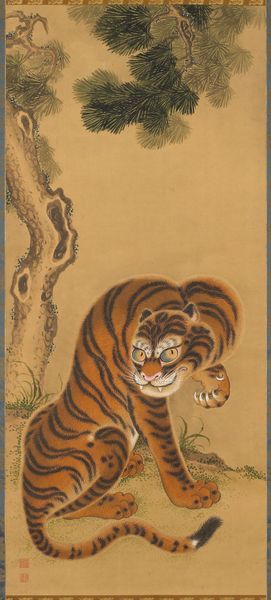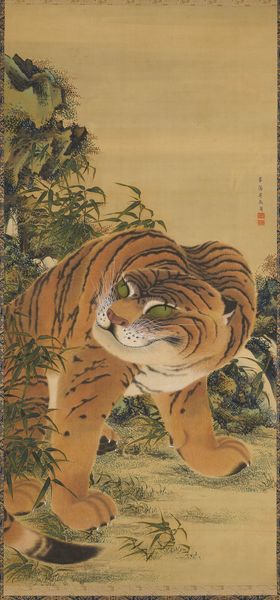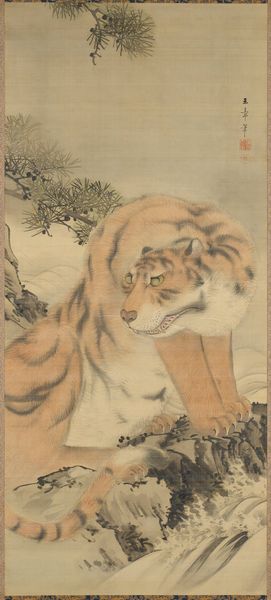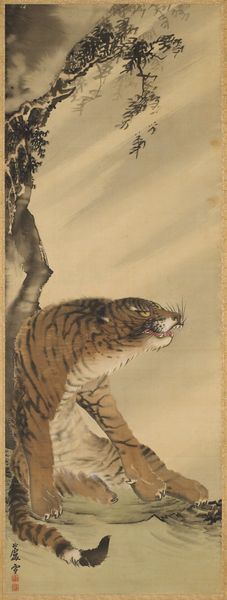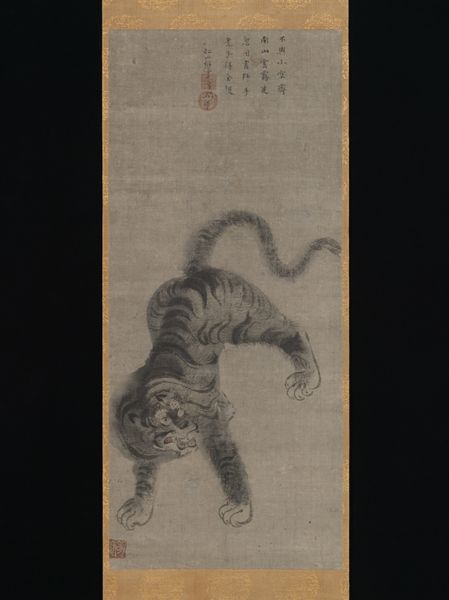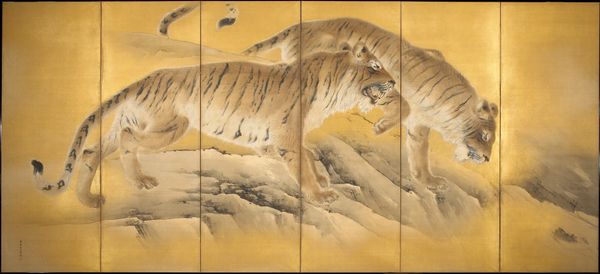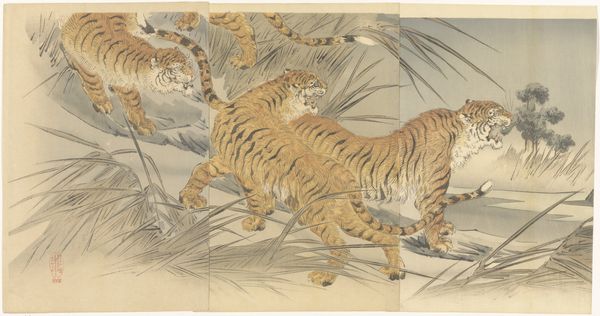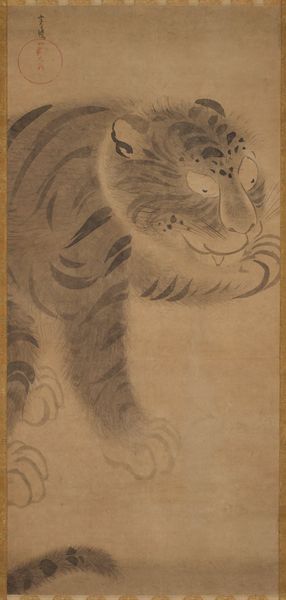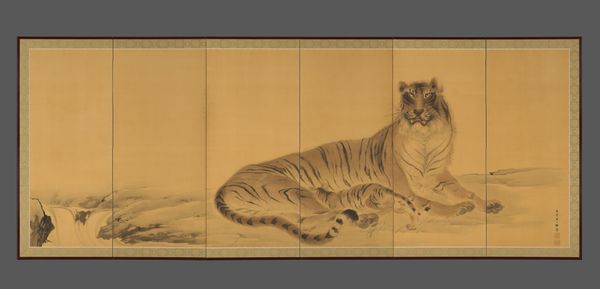
Dimensions: height 240 mm, width 250 mm
Copyright: Rijks Museum: Open Domain
Ohara Koson created this print of a tiger at an unknown date, using woodblock printing techniques. Prints like these were made for export to the West. At the time, Japan was opening up to international trade after a long period of isolation. Japanese artists were eager to embrace European naturalism. As such, prints of animals became popular, with the tiger being an important symbol in Japanese culture, associated with strength, courage and protection. You can see that Koson has made an effort to depict the tiger realistically, with careful attention to its anatomy and fur patterns. However, this print also reflects the influence of traditional Japanese art. The composition is simple and uncluttered, with the tiger placed against a blank background. This aesthetic preference is typical of woodblock prints, which often emphasized flat planes of colour and simplified forms. To understand the meaning of this print, we might look at the history of Japanese printmaking and the rise of the export market. We can see that it reflects a fascinating moment of cultural exchange, where Japanese artists sought to blend their own traditions with Western styles.
Comments
No comments
Be the first to comment and join the conversation on the ultimate creative platform.
